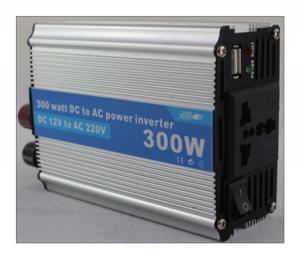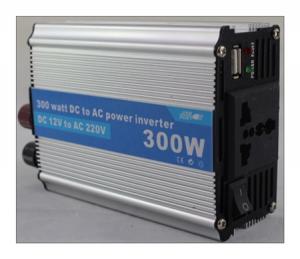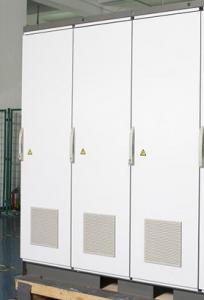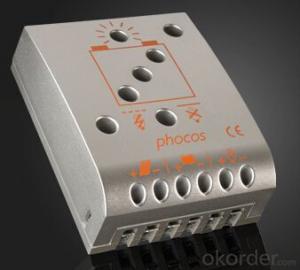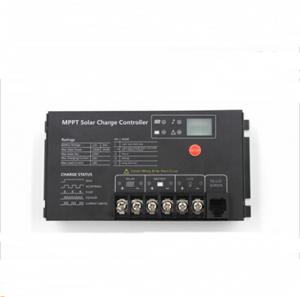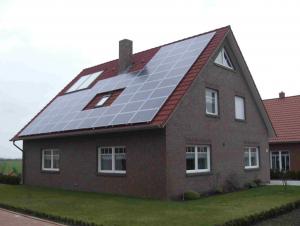Solar Charging Hight Quality Useful Discharging Controller 300W
- Loading Port:
- China main port
- Payment Terms:
- TT or LC
- Min Order Qty:
- 100 unit
- Supply Capability:
- 10000 unit/month
OKorder Service Pledge
OKorder Financial Service
You Might Also Like
1, Product desciption
Inverter circuits designed to produce a variable output voltage range are often used within motor speed controllers.
The DC power for the inverter section can be derived from a normal AC wall outlet or some other source. Control and feedback circuitry is used to adjust the final output of the inverter section which will ultimately determine the speed of the motor operating under its mechanical load.
Motor speed control needs are numerous and include things like: industrial motor driven equipment, electric vehicles, rail transport systems, and power tools. (See related: variable-frequency drive ) Switching states are developed for positive, negative and zero voltages as per the patterns given in the switching Table.
The generated gate pulses are given to each switch in accordance with the developed pattern and thus the output is obtained.
2, Features of the product
Inverters convert low frequency main AC power to higher frequency for use in induction heating.
To do this, AC power is first rectified to provide DC power. The inverter then changes the DC power to high frequency AC power. Due to the reduction in the number of DC Sources employed, the structure becomes more reliable and the output voltage has higher resolution due to an increase in the number of steps so that the reference sinusoidal voltage can be better achieved.
This configuration has recently become very popular in AC power supply and adjustable speed drive applications. This new inverter can avoid extra clamping diodes or voltage balancing capacitors. There are three kinds of level shifted modulation techniques, namely:
The first thing to figure out is the length of road in need of street lights.
This can be a small entrance road only a couple hundred of feet long to miles of streets through an area. Does the area currently have any type of lighting available.
What is the reason for needing street lights in this area
Is the electrical grid already nearby or would you need to call in the power company to bring in electrical lines.
If the electric needs to be brought to the area, how much is this going to cost? Depending on how far the grid electric is from the location of the needed lighting, this can be quite expensive.
How much lighting is needed on the street? Do the lights need to be dark sky compliant.
Do the street lights need to run from dusk to dawn or for only a specified number of hours at night.
Are the street lights able to dim in the middle of the night and still provide enough lighting.
These questions need to be answered before you can decide on how many lights you will need to complete the project.
3, Product Image
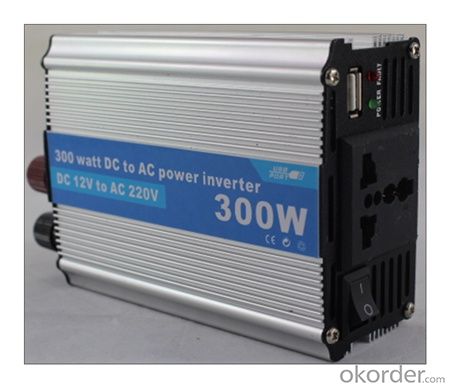
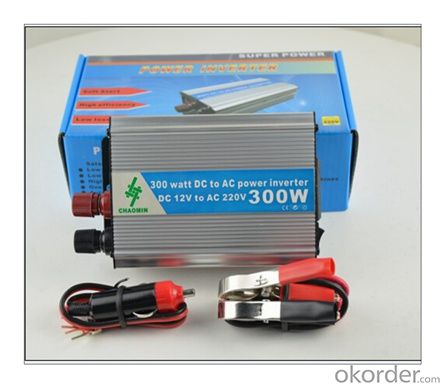
4, Detailed Specification
Specification:
Model | Tracer |
Rated system voltage | 12/24V auto work |
Rated battery current | 40A |
Rated load current | 20A |
Max.battery voltage | 32V |
Max.PV open circuit voltage | 100VDC |
Max.PV input power | 12V 500W, 24V 1000W |
Self-consumption | <10mA(24V) |
Charge Circuit Voltage Drop | ≤0.26V |
Discharge Circuit Voltage Drop | ≤0.15V |
Communication | TTL232 / 8 pin RJ45 |
Temp.compensation | -5mV/℃/2V |
Working temperature | -35℃~+55℃ |
Storage temperature range | -35℃~+80℃ |
Humidity | 10%-90% NC |
Enclosure | IP30 |
Altitude | ≤3000m |
Dimension | 242mm x 169mm x 91mm |
Mounting holes | 180mm x 160mm |
Mounting hole size | Φ5 |
Terminal | 25mm2 |
Weight | 2.05kg |
- Q:Can a solar controller be used with solar panel pergolas?
- Yes, a solar controller can be used with solar panel pergolas. A solar controller is designed to regulate the flow of electricity from the solar panels to the batteries, ensuring optimal charging and preventing overcharging. This function is essential for any solar power setup, including solar panel pergolas.
- Q:Can a solar controller be used with a solar-powered wireless network?
- Yes, a solar controller can be used with a solar-powered wireless network. A solar controller helps regulate the power flow from the solar panels to the wireless network, ensuring that the network receives a steady and optimal power supply. This is important for maintaining a reliable and efficient operation of the wireless network.
- Q:What is the meaning of the DC load above the solar controller?
- Solar controller, there are two major functions, one is used to charge the battery, this is the solar input function. One for the battery discharge, this is the output function. Used to charge is to prevent the electric overshoot is too full, the battery charge bad. Used to discharge is to prevent the discharge too much, the battery damage. Because the battery can not overshoot, too. Discharge, it depends on what the load discharge
- Q:Can a solar controller be used in a solar-powered ventilation system?
- Yes, a solar controller can be used in a solar-powered ventilation system. A solar controller is responsible for regulating the flow of electricity from the solar panels to the ventilation system, ensuring optimal performance and preventing overcharging of batteries. It helps monitor and control the amount of power being generated and utilized by the system, making it an essential component in a solar-powered ventilation setup.
- Q:Can a solar controller be used with solar panel arrays in parallel?
- Yes, a solar controller can be used with solar panel arrays in parallel. The solar controller helps regulate the charging and discharging of the batteries connected to the solar panels, ensuring optimum performance and protection. Whether the solar panels are connected in parallel or series, the solar controller can effectively manage the power flow and maintain the desired voltage and current levels.
- Q:What is the role of a solar controller in preventing battery over-voltage?
- The role of a solar controller in preventing battery over-voltage is to regulate the flow of energy from the solar panels to the battery, ensuring that the battery does not receive an excessive charge. The solar controller monitors the voltage level of the battery and automatically disconnects the solar panels when the battery reaches its maximum safe voltage. By preventing over-voltage, the solar controller helps protect the battery from damage and extends its lifespan.
- Q:What is the price range for a solar controller?
- The price range for a solar controller can vary depending on the brand, features, and capacity. Generally, you can find solar controllers starting from around $20 for basic models and going up to several hundred dollars for advanced or high-capacity controllers.
- Q:What is the maximum operating altitude of a solar controller?
- The maximum operating altitude of a solar controller can vary depending on the specific model and manufacturer. However, most solar controllers are designed to operate effectively at altitudes of up to 10,000 feet (3,048 meters) or higher. It is important to check the specifications provided by the manufacturer for the specific solar controller being used to determine its maximum operating altitude.
- Q:How does a solar controller handle short-circuit conditions?
- A solar controller is designed to regulate and control the charging process of solar panels to ensure the optimal performance and safety of the system. When it comes to short-circuit conditions, the solar controller employs various mechanisms to handle such situations. Firstly, a solar controller typically incorporates short-circuit protection features. These features are often in the form of internal fuses or circuit breakers that are designed to trip or open the circuit in the event of a short circuit. This helps to prevent excessive current flow that could potentially damage the solar panels or other connected components. Additionally, the solar controller may also include overcurrent protection mechanisms. These mechanisms work by monitoring the current flowing through the system and automatically reducing or cutting off the current when it exceeds a predetermined threshold. This helps to prevent damage to the solar panels or other components in the event of a short circuit. Furthermore, some advanced solar controllers utilize microprocessors or microcontrollers to monitor and analyze the system's conditions. These microprocessors are programmed to detect short-circuit conditions by continuously monitoring the voltage and current levels. In the event of a short circuit, the microprocessor can quickly respond by shutting down the charging process or activating the short-circuit protection mechanisms. Overall, a solar controller is equipped with various protective measures to handle short-circuit conditions. These measures include short-circuit protection features such as fuses or circuit breakers, overcurrent protection mechanisms, and advanced monitoring systems. By employing these mechanisms, the solar controller ensures the safety and longevity of the solar panels and the entire solar power system.
- Q:How do I monitor the performance of a solar controller?
- To monitor the performance of a solar controller, you can follow these steps: 1. Check the controller's display: Most solar controllers have built-in displays that provide real-time information about the system's performance. This display usually shows parameters like battery voltage, charging current, and load usage. By regularly checking this display, you can keep an eye on the controller's performance. 2. Analyze battery charge status: Solar controllers are responsible for charging batteries, so monitoring the battery's charge status can give you insights into the controller's performance. Use a battery monitor or a voltmeter to measure the battery voltage regularly. If the voltage remains within the recommended range, it indicates that the solar controller is effectively charging the battery. 3. Evaluate charging efficiency: Assessing the charging efficiency helps you determine how well the solar controller is converting solar energy into usable power. Measure the current being delivered by the controller to the battery using a suitable ammeter. Compare this value to the solar panel's rated current to gauge the controller's charging efficiency. 4. Monitor load usage: Solar controllers also manage the power distribution to the connected loads. Keep an eye on the load usage to ensure the controller is providing power as required. If you notice irregularities or inconsistencies in load usage, it may indicate a performance issue with the solar controller. 5. Utilize monitoring devices: In addition to the built-in display, you can enhance monitoring using external devices. Some solar controllers offer compatibility with remote monitoring systems or data loggers. These devices allow you to track the performance of the controller remotely and analyze historical data. By logging and analyzing the data, you can identify any performance trends or anomalies. By employing these monitoring techniques, you can effectively assess the performance of a solar controller and promptly address any issues that may arise.
1. Manufacturer Overview |
|
|---|---|
| Location | |
| Year Established | |
| Annual Output Value | |
| Main Markets | |
| Company Certifications | |
2. Manufacturer Certificates |
|
|---|---|
| a) Certification Name | |
| Range | |
| Reference | |
| Validity Period | |
3. Manufacturer Capability |
|
|---|---|
| a)Trade Capacity | |
| Nearest Port | |
| Export Percentage | |
| No.of Employees in Trade Department | |
| Language Spoken: | |
| b)Factory Information | |
| Factory Size: | |
| No. of Production Lines | |
| Contract Manufacturing | |
| Product Price Range | |
Send your message to us
Solar Charging Hight Quality Useful Discharging Controller 300W
- Loading Port:
- China main port
- Payment Terms:
- TT or LC
- Min Order Qty:
- 100 unit
- Supply Capability:
- 10000 unit/month
OKorder Service Pledge
OKorder Financial Service
Similar products
New products
Hot products
Hot Searches
Related keywords
